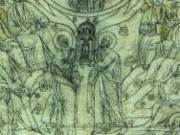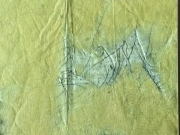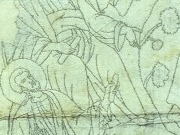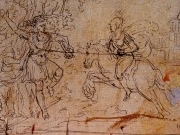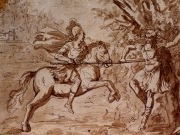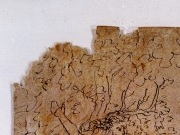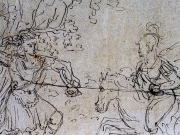Paper Objects Conservation Workshop
The Museum’s paper collection contains some 5,000 manuscripts, printed books and paper art-works, but it was not until the 1980s that a conservator was engaged to care for the collection. Still, the lack of suitable infrastructure meant her work was necessarily confined to emergency interventions and simple procedures.
However, the need to study, conserve and display the collection led to the employment of specialist conservators in 1995 and to the provision of new premises for the workshop. Ten years of hard work later, the Museum’s important collection of manuscripts, printed books and paper art-works was displayed in the Museum’s new permanent collection which opened in 2004.
In addition, the workshop has been engaged in a programme of preventive conservation for over a decade, as well as in the recording, photographing and reorganizing of the artefacts in the collection.
The collection is now divided into four sections: drawings (pencil drawings, anthibola, etc.), painted works (water-colours, temperas, etc.), manuscripts (codices, documents, etc.) and printed works (early printed books, engravings, etc.). The artefacts are prioritized for conservation according to their condition and to the Museum’s needs (exhibitions, publications etc.).
The drawings section contains a group of sketches for wall paintings by Loudovikos Theirsios which are of particular interest artistically and historically, but also because of their scale: some are 12.5 metres high. Most consist of two or more paper sections and relate to religious themes. Joining, photographing and conserving the sections are especially demanding tasks in terms of the techniques and media used. [video].
The drawings section also includes some 3,700 preliminary sketches (anthibola) of various dimensions. To date, almost half have been conserved and placed in transparent polyester membrane envelopes.
The manuscripts section includes a large number of codices (handwritten books) still in their original bindings (boards, covering, headpieces). Given their inestimable value to researchers, emphasis was placed on the preventive conservation of the collection, with interventions restricted to the absolutely essential with a view to maintaining the works in a state as close to the original as possible.
All the books (manuscripts and printed) in the collection have been treated with insecticide as a preventive measure using the nitrogen method, and have been placed in acid-free storage boxes.
The workshop has also taken digital photographs of all the artefacts in the collection, with a view to creating a database which will allow researchers non-physical access to the material, and thus reduce additional wear and tear on the collection.
Currently staffed by four conservators, the workshop provides final-year students with practical conservation experience as well as playing an active role in the life of the Museum.








